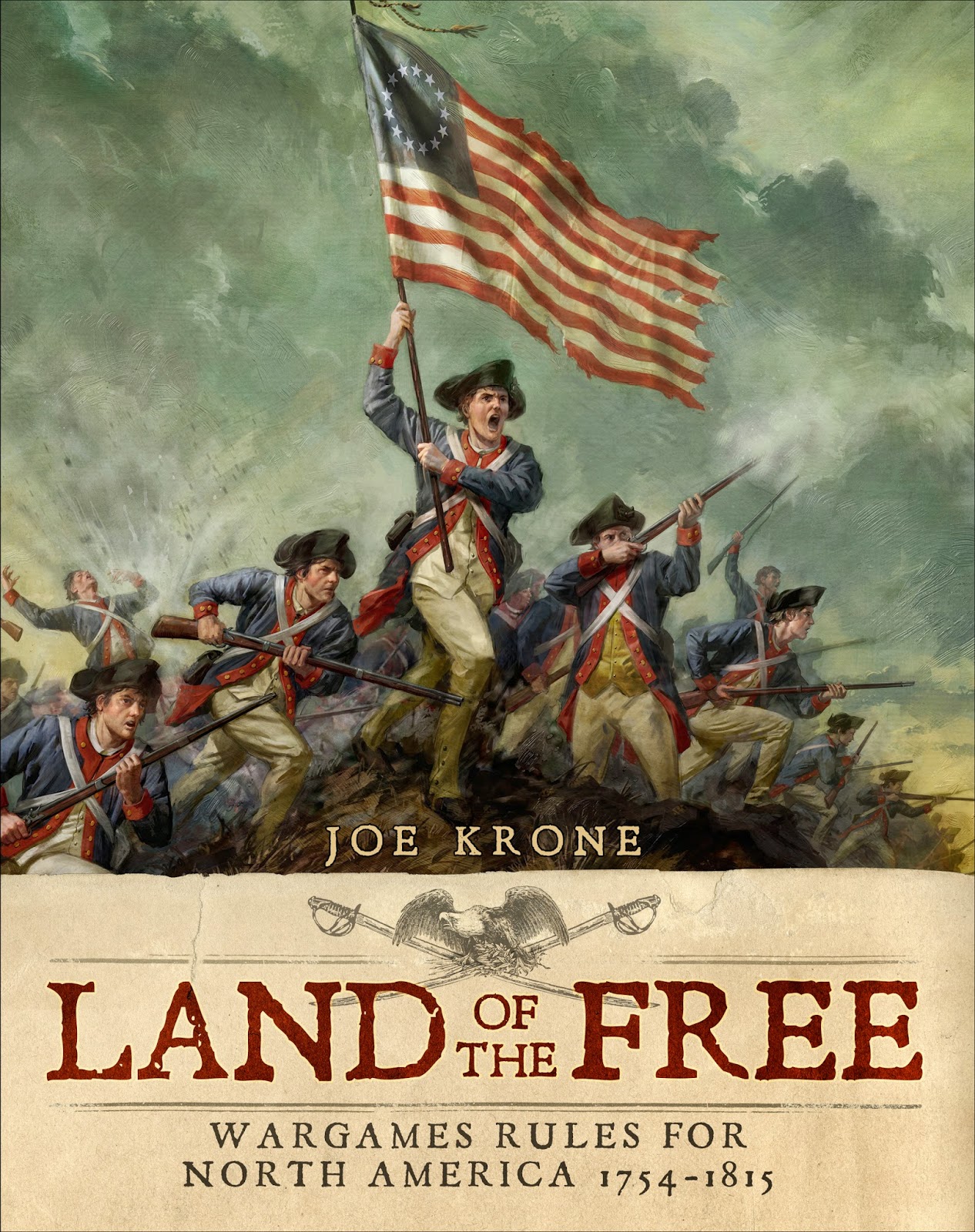des infos de l'auteur sur la règle issues de son blog:
http://landofthefreewargaming.blogspot.fr/
Standard size or number of miniatures in a game?
Land of Free uses a flexible force building system utilizing 4 different sizes to represent your elements (units) in the game (tiny, small, medium, large). These sizes can represent anything that the players elect to play allowing gaming groups to play at smaller 'skirmish' level actions or bigger battles.
Troop ratio?
There is no set ratio because the players determine the size of their games.
Basing standard?
There are recommended basing styles in the book but again the basing is flexible to accommodate the myriad of existing collections in the world.
How does army building work?
Players must have a Force Commander and a minimum of two Group commanders. Each Group Commander must have a minimum of two elements (any size). So a legal army would be a Force Commander, Group Commander with 2 Elements, and another Group Commander with 2 Elements
Ground scale?
All movement and force setup in the game is standardized regardless of the scale of the miniatures.
Time scale? Battle and reality
The ordering system takes into account that an element is performing their actions over a couple minutes of combat time. In reality a game that consists of about 6-8 elements per side will take about 2 hours once the players know the rules.
Phases of the game?
The turn operates by Groups. One player will activate a group then activate each element within the group until all elements have had an opportunity to receive orders. Then the other player will do the same. The sides will continue to alternate activating groups until all groups and elements have performed their orders or passed. So an active element will perform all their moving, shooting, melee, etc. before moving to the next element.
How do orders work?
Each element has a number of maneuver and combat orders it may perform in a turn. These orders can be done in any sequence giving an element a measure of tactical flexibility. Maneuver actions are things like moving forward, backward, turning, wheeling, changing formation, and reloading their weapons. Combat orders are shooting and fighting a round of melee.
Unit stats?
A unit has the following stats: Maneuver, Combat, Discipline, Morale, Action, Points
The stats are based on the elements size but also can be influenced in the Advanced Rules by the elements type.
For example a medium element would look something like this:
Maneuver: 3, Combat: 3, Discipline: 3, Morale: 7+, Action: 4, Points: 25
Maneuver and combat are the number of orders an element may take in a single turn. See above. Discipline is the number of hits an element may take before it loses a level of discipline. Morale is the value or higher an element must roll on 2d6 in order to pass morale related tests. Action is the number of d6 dice the element roles for both shooting and melee combat. The points value is used for players wishing to play balanced games.
Historical aspect (theaters, scenarios, etc)
A lot of historical re-fights were written for the book but until the book has been edited I think it would be best to hold off on listing the battles. I tried to incorporate battles from all the wars that are represented by these rules. There is also a section on 'generic' scenarios that are typical of why these armies would fight.
Investment?
If you are someone very interested in this time period and don't have any miniatures then your initial cost of investment could be quite low. For under $200.00 USD you could have your rules and both American and British forces to create some nice games. This value does not take into account a gaming table and scenery. The rulebook retails for around $35 USD leaving you $165 USD for miniatures. Wargames Factory is releasing 6 boxes of toy soldiers and even if they sell them at $30 USD a piece that will give you 5 boxes to choose from. More than enough to get you started and playing some decent sized games.
Special rules for different unit types?
The initial stats for the troops are generic allowing new players to quickly grasp the concept of play and issuing orders without the added confusion of special rules. In the Advanced Rules section I have added several element types that players can use in their games for an added points cost.


